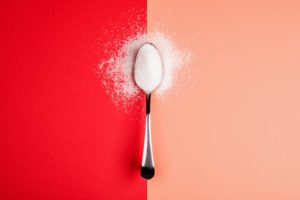
John Wernbom
Aspartame – a guide to artificial sweeteners
Aspartame is an artificial high-intensity sweetener that most people are familiar with. It is a well-tried ingredient that can be found in many different foods. At the same time, aspartame has endured massive criticism and suspicion. Many people believe that it is harmful and can cause all sorts of diseases and ailments. But what does aspartame consist of, what are its properties and does it belong in modern sugar reduction?
Read the full article »Hemglass tried sweetened fibres in 2019 – how did it turn out?
Last summer, Hemglass started to sell sugar-reduced ice cream with sweetened fibres from Bayn. How did it turn out? Is it still part of the product range? We ask Hemglass business developer Anders Granath.
Read the full article »Welcome back!
Now we are ready for another eventful year in the food industry. We hope you are as excited as we are. Food and beverage e-commerce reaches new heights, Europe is the fastest-growing market for dietary fibres and promising startups are filling us with hope for the future.
Read the full article »Summer listening – 6 food-related podcasts!
Listen to podcasts this summer! Whether you want to be updated, get new perspectives, or just to be entertained, there are plenty of podcasts about food and the food industry. We have collected six podcasts with completely different subject areas. Which will be your favourite under the parasol?
Read the full article »Stop bragging – reduce sugar by stealth!
Stop bragging – reduce sugar by stealth! That’s the right path according to Jack Winkler, professor emeritus in nutrition recommendations. In most cases, consumers are not interested in dull statements about lower sugar content. They want to see and hear something else. But what?
Read the full article »How to label food containing steviol glycosides
For the EU, it is important that labelling and marketing of new ingredients should not mislead consumers. What about steviol glycosides – how should you frame it and are there any obvious pitfalls? In this article, we take a closer look at what to think about when labelling and marketing steviol glycosides.
Read the full article »Is fermentation the future of steviol glycosides?
A new way to make steviol glycosides is emerging in the US and other parts of the world. Through fermentation, you can extract sweet and rare steviol glycosides such as Reb M. What are the advantages of this new solution and are there any drawbacks?
Read the full article »What can fill the void of sugar?
Sugar is amazing! Therefore, replacing it is not an easy task. You can get sweetness from a high-intensity sweetener such as steviol glycosides. But what about the phenomenal bulk properties of sugar? It is perhaps the most difficult task when it comes to sugar reduction – to fill the void of sugar. In this article, we take a closer look at the matter.
Read the full article »How to purchase stevia extract
Have you decided that you want to reduce sugar with stevia? Congratulations! But is it just to go ahead? No, not really. Getting hold of stevia extract is easy. The difficult thing is to find out which extract fits your product and ensure that the extract maintains a consistent quality level. And who are you going to source from? In this article, we go through the basics of how to purchase stevia.
Read the full article »Polydextrose – sugar reduction in practice
With polydextrose, you get fullness and texture but not as many calories. In addition, the taste is perceived as pure and neutral. This dietary fibre has many good properties that make it a candidate in successful sugar reductions. But you’ll have to find sweetness elsewhere!
Read the full article »









